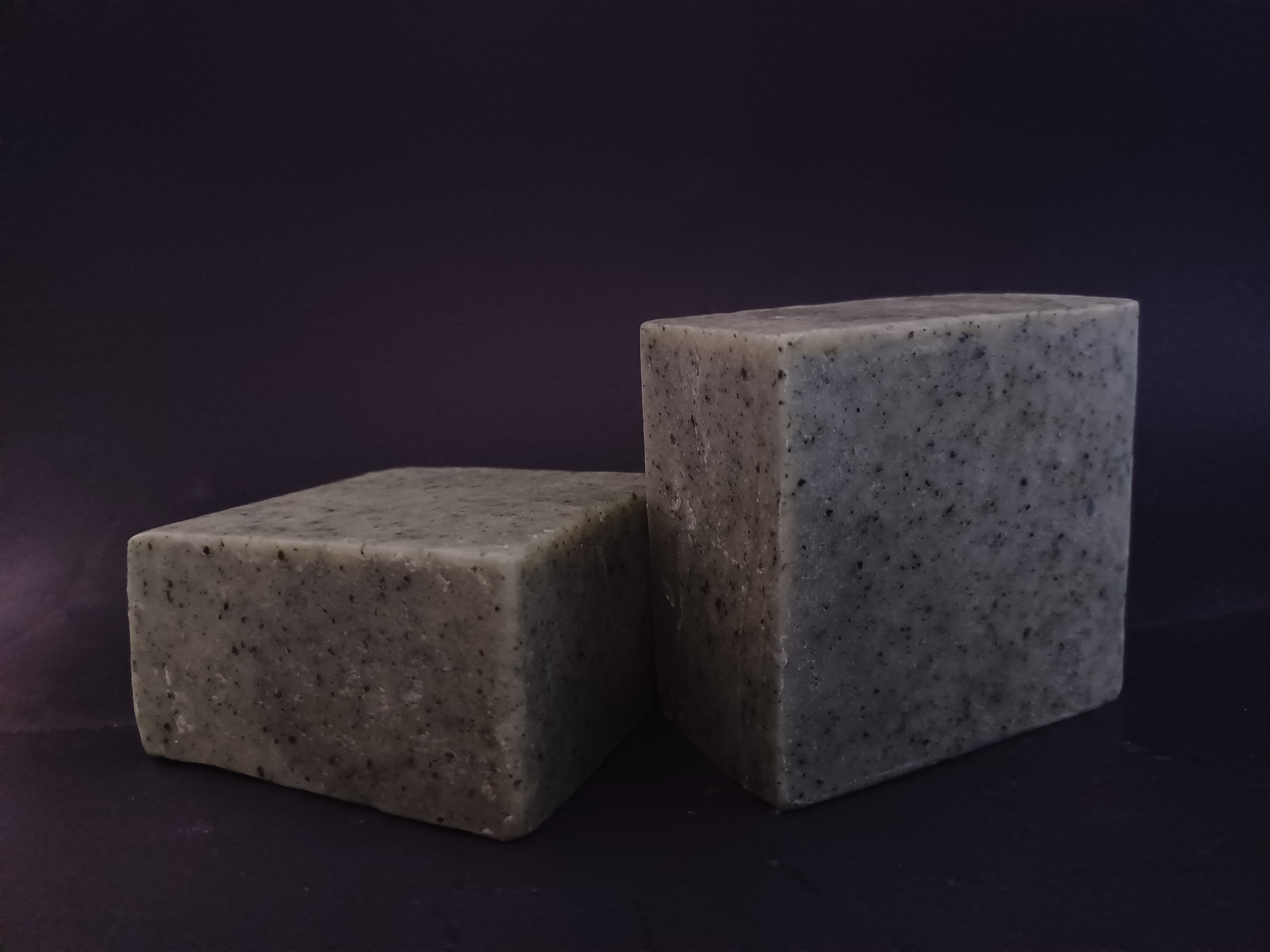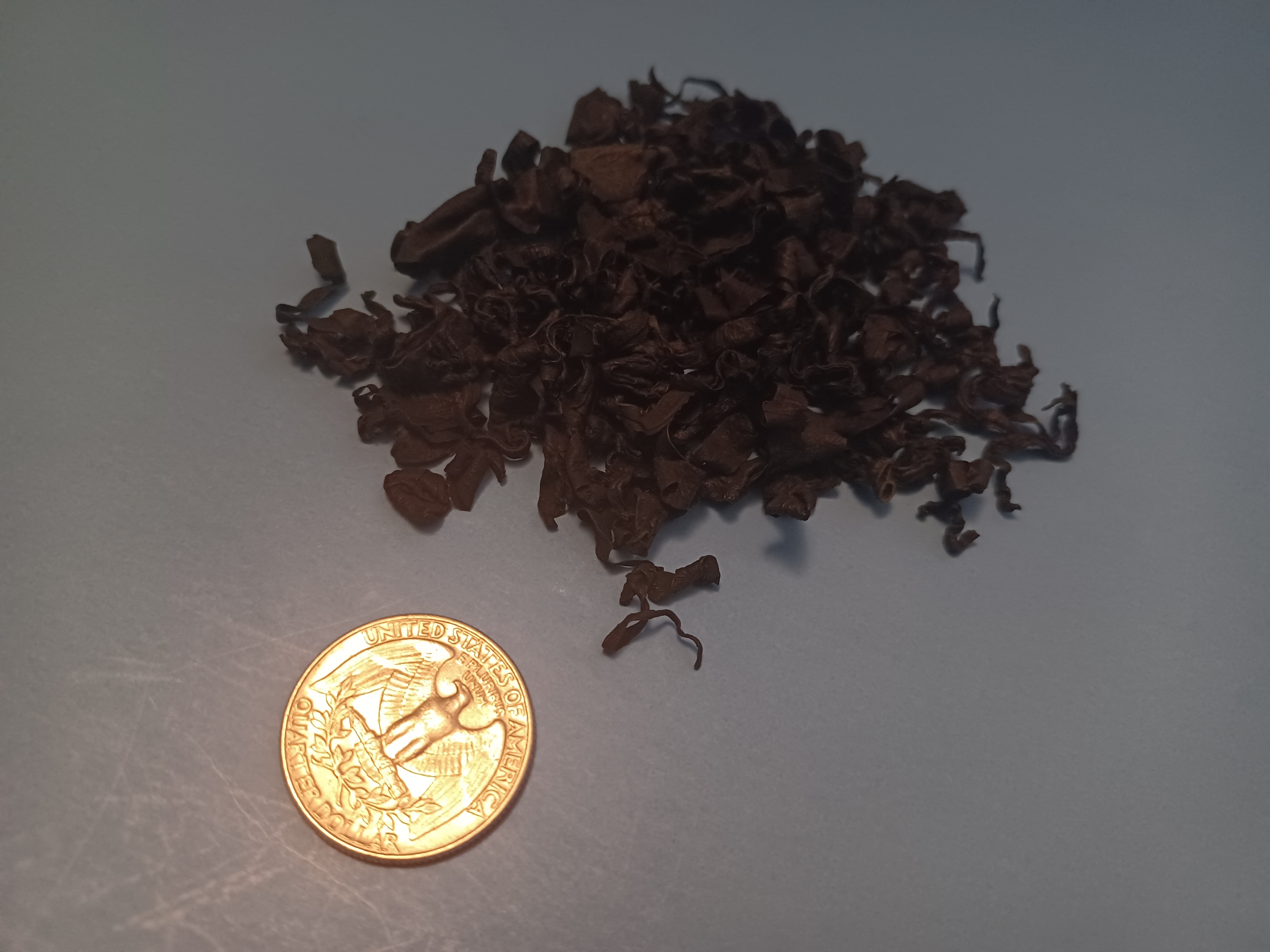Your skin will love this wakame soap! The recipe is easy to make and it's loaded with vitamins and minerals.

First things first. Lets learn how to pronounce wakame correctly before we begin the wakame soap recipe. It's pronounced Wah-Kaa-May. To hear the pronunciation audibly, click here.
Wakame's scientific name is Undaria pinnatifida. But often goes by the name seaweed, brown seaweed, sea kelp, sea mustard, asian kelp or sea lettuce.
What is wakame and why is it so popular?

Wakame is a brown algae found in oceanic salt waters. This algae has golden brown fronds. Fronds are what you would call the leaves of brown marine algae. The fronds of wakame are fine and tender.
Other brown marine algae such as kombu have tougher fronds. It is interesting to note that surface seaweeds will be a lighter green whereas seaweed that dwells in deeper waters will have darker colors.
Originally wakame was found in the Pacific Ocean along the coastal areas of Japan, Russia and China. More recently it has been found on the west coast of the United States and Canada. Wakame is farmed and harvested in all of these areas today including the Atlantic coast of the United States.
It has become popular because there are incredible health benefits to eating this brown sea kelp. It has an elevated iodine content which can be helpful for thyroid issues. The seaweed wakame absorb up to ten times more minerals than plants which grow on land. This means that they are loaded with minerals.
The benefits from eating wakame algae are well known, but the benefits of using wakame topically are significant as well.
What are the Wakame Skin Benefits?
Wakame is quite a popular skin care ingredient. It has been found in many creams lotions and powders that are sold at big box retailers and mega online stores. According to the labels on many of these skin care products, wakame is helpful in the areas of anti aging, anti wrinkle, skin firming, moisturizing, hydrating and in helping to sooth common skin conditions such as acne, eczema or psoriasis. Furthermore it is anti inflammatory, helps detoxify the skin and will help tone the skin. That's a long list of benefits that will most likely motivate you to use the wakame soap making recipe below.
It's no secret that wakame has been used in Japan for centuries. Well known for it's nutritional value, favorable health benefits and medicinal nature.
Traditional Japanese miso soup includes wakame as an ingredient.
What vitamins and minerals are in wakame?

Wakame contains an elevated level of iodine. It may not contain the highest levels of iodine like it's close relative kombu, but it has an elevated amount as all seaweeds do.
Other abundant minerals found in wakame are potassium, magnesium and calcium. It also contains vitamin A and the compound fucoidan. As you well know vitamin A is good for the eyes and fucoidan has anti-tumor properties found in some studies.
Where can I find wakame locally?
If you search "local Asian food markets" in your city or town, you will likely find several to choose from.
Visit several Asian stores and take a stroll down the seaweed isle. You will find large packaged bags of flat seaweed snacks and flat seaweed for making sushi rolls.
Skip those and look for the sealed bags labeled as Wakame dried seaweed. The 2 ounce bag is the one you want.
Subscribe to access the Wakame Soap Recipe now!
Wakame soap making recipe numbers.
Access the Wakame soap recipe PDF to get these seven soap quality numbers based off the suggested recipe oils to use. Want to use another oil? Recalculate the recipe at the Soap-Calc and write your new soap quality numbers here.
1. Hardness of ( __ ).
2. Cleansing Capabilities at ( __ ).
3. Conditioning Qualities are at ( __ ).
4. Bubbly number is ( __ ).
5. Creamy number is ( __ ).
6. Iodine is at ( __ ).
7. The INS number is at ( ___ ).
Quality range numbers.
Compare the numbers you've come up with from above, to the quality ranges listed here.
1 Hardness. Best range is between (29 – 54). The higher the number the harder the soap bar. We had ( __ ).
2. Cleansing. Best range is between (12 – 22). The lower the number the more mild the soap. Our cleansing number is ( __ ).
3. Conditioning. Best range is between (44 – 69). The higher the number the more soothing and softening to your skin. We have a number of ( __ ) .
4. Bubbly. Best range is between (14 – 46). Higher numbers in this category equate to more bubbly lather. Our Bubbly number is ( __ ).
5. Creamy. The best range is between (16 – 48). The higher the number the more lather you will have. Our Creamy number is ( __ ).
6. Iodine. The range here is anything (under 70). If your number is (under 70) the soap will not go rancid. Our number is ( __ ).
7. INS. The best range here is between (136 – 165). The lower the number the more moisturizing the soap will be to your skin. We have the number ( ___ ).